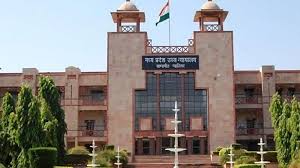Lower judiciary treated like ‘shudras’, ‘les misérables’, High Court judges like ‘savarnas’: Madhya Pradesh HC quashes termination of district judge

In a landmark judgment, the Madhya Pradesh High Court quashed the termination of a district judge. The court went beyond reinstating the judge; it highlighted deep-rooted discrimination within the judiciary. Judges said that lower judiciary officials often face treatment like “shudras” and “les misérables,” while High Court judges enjoy the status of “savarnas.” These terms reflect historical social divisions based on caste and privilege.
This ruling serves as a wake-up call for the judiciary to address long-standing inequalities.
Background: The Termination and Legal Challenge
The case started when a district judge was abruptly terminated under questionable circumstances. The judge challenged the termination in the Madhya Pradesh High Court, arguing unfair treatment and procedural lapses.
District judges play a vital role in India’s judicial system. They handle numerous civil and criminal cases at the grassroots level, ensuring justice reaches remote areas. However, they often struggle with limited resources, political interference, and lack of respect from higher authorities.
The High Court’s Strong Remarks on Discrimination
The High Court did not stop at legal reasoning. It used strong language to condemn the judiciary’s internal hierarchies. Referring to the lower judiciary as “shudras” and “les misérables,” the court pointed out how these officials endure marginalization and disrespect.
The term “shudras” refers to a lower caste traditionally assigned menial tasks. “Les misérables,” a French phrase, means “the miserable ones,” symbolizing neglect and hardship. On the other hand, High Court judges were compared to “savarnas,” privileged upper-caste groups known for power and dominance.
The court intended to expose the deep social divide still present within the judiciary. It urged stakeholders to acknowledge and address this imbalance.
Implications for the Judiciary System
This judgment carries significant consequences for India’s judicial system.
1. Tackling Institutional Hierarchies
The court exposed uncomfortable truths about the judiciary’s layered structure. Lower court judges often face professional inferiority and lack autonomy. Such hierarchies lower morale and threaten judicial independence, especially at the grassroots.
2. Ensuring Fair Treatment and Due Process
By quashing the termination, the court emphasized the need for transparency and fairness. Arbitrary dismissals harm judges’ careers and the judiciary’s reputation. The ruling demands strict adherence to procedural rules in service matters.
3. Sparking Reform Discussions
This verdict might encourage reforms to close the gap between judicial levels. Calls for better infrastructure, fair promotion policies, and sensitization programs have grown louder. The court’s candid remarks strengthen the case for urgent change.
Voices from the Legal Community
Legal experts have reacted strongly to the judgment.
Senior advocate Anil Kapoor praised the court’s courage. “This judgment is a wake-up call for the judiciary and the government. Justice begins with fairness within our own ranks. The court’s language starkly reveals ongoing discrimination,” he said.
However, some voices urged caution. A retired High Court judge said, “While these concerns are valid, we must avoid framing the judiciary as divided factions. Cooperation across levels remains essential.”
Historical Context of Judicial Hierarchy in India
India’s judiciary has a tiered structure: the Supreme Court at the top, followed by High Courts, then subordinate courts. While this structure defines authority and responsibility, it also creates inequalities in power, pay, and respect.
Lower judiciary officers face pressure from politicians, administrators, and resource shortages. Despite these hurdles, they handle most cases nationwide. Such imbalances threaten their independence and efficiency.
Moving Forward: Steps Needed
To address the court’s concerns, the judiciary and government must act swiftly:
- Institutional Reforms: Create independent commissions to manage recruitment, transfers, and promotions, limiting undue influence.
- Capacity Building: Invest in infrastructure, training, and welfare programs for lower judiciary officers.
- Sensitization: Organize workshops to foster respect and cooperation across judicial levels.
- Legal Safeguards: Strengthen protections against arbitrary terminations and harassment.
- Accountability: Establish systems to monitor service conditions and resolve grievances promptly.
Conclusion
The Madhya Pradesh High Court’s decision goes beyond reinstating a judge; it spotlights deep inequalities in India’s judiciary. Using terms like “shudras,” “les misérables,” and “savarnas,” the court challenged the system to confront its biases.
For justice to flourish, the judiciary must first treat all its members with respect and fairness. This ruling could spark meaningful reforms to create a more equal and effective judicial system.






